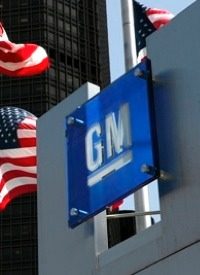
The president recognizes that throwing more money at GM “may give some Americans pause,” yet he maintains that “we are acting as reluctant shareholders because that is the only way to help GM succeed.” All he succeeded in doing though was to invite the charge that he was nationalizing a major manufacturing company, dubbed “Government Motors” by the Republican National Committee. According to a June 2 Los Angeles Times online story, Michael Steele, the committee chairman, said, “No matter how much the president spins GM’s bankruptcy as good for the economy, it is nothing more than another government grab of a private company and another handout to the union cronies who helped bankroll his presidential campaign.”
The Times noted that Obama’s actions concerned the U.S. Chamber of Commerce, which promised to “expose and fight any counterproductive influence by government, unions or politicians over decisions that should be left to management.” Small bondholders also registered their criticism that the United Auto Workers union was receiving special concessions. “We have retirees on our side who are losing their retirement, but it seems like the retirement of the people in the union is being protected,” said Mark Modica, a business manager at a Doylestown, Pa., Saturn dealership. “I don’t think there’s a doubt there was preferential treatment.”
Speaking of the UAW, its healthcare trust for retirees will get a 17.5 percent slice of the ownership pie out of the 40 percent remaining after the government’s share. Canada and Ontario are contributing $9.5 billion for a 12.5 percent stake, and the final 10 percent belongs to small bondholders.
Regarding GM itself, the company plans to keep its core brands — Buick, Cadillac, Chevrolet, and GMC — while letting go of Hummer, Pontiac, Saab, and Saturn. The French news agency AFP reported on June 2 that “Hummer would be sold to a Chinese industrial machinery firm, Sichuan Tengzhong, with final terms still to be determined,” and that the move may keep the hulking Hummer in production and save 3,000 U.S. jobs. Negotiations are ongoing with parties interested in buying Saab and Saturn, while Pontiac production will be shut down.
Despite the federal government owning more than half of GM, President Obama has declared that he has no interest in running a car company and that the federal government won’t be dictating the company’s everyday decisions. But this fails to take into account what the federal government is already mandating for automakers through regulation.
President Obama’s proposed fuel efficiency standards are the highest in history, as mentioned in our May 20 article “A Logic Deficiency About Fuel Efficiency.” While the administration estimates that modifications to current vehicles will add about $1,300 to the cost of a new car, others disagree. Our May 20 article quoted Sandy Stojkovski, an engineering and fuel economy expert at auto industry consulting firm Ricardo, as estimating “it could cost consumers between $5,000 and $12,000 more per vehicle under the federal fuel economy targets.”
In reality, this is a very significant dictation of everyday operations to all the auto manufacturers in the country, and GM will have little choice but to bow to the whims of 60-percent-owner Uncle Sam and pass along the cost to consumers. No one in the administration has explained how this can possibly help drive GM’s recovery from bankruptcy.
Photo: AP Images



